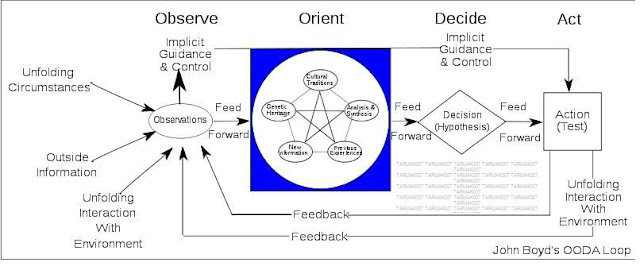JAISWAL
Senior Member
- Joined
- Mar 13, 2010
- Messages
- 1,527
- Likes
- 1,027
Tarmak007 -- A bold blog on Indian defence: Gen-next Battlefield Management Systems give combat edge to armed forces
++

++

++

++


Battlefield Management Systems (BMS) act as force-enablers. It gives combat-advantage to our Armed Forces, enabling a state-of-the-art networked theatre in a spit-fire battlefield environment. The recognition of information dominance in future wars will be based on the global success of information dominated military command and control, in influencing the outcome of the battle. "We are at the threshold of a new era; information must no longer be an enabler but a core war fighting capability," a senior US naval chief had said.
Since the 1980s, Indian defence scientists in general, and specialists at the Centre for Artificial Intelligence and Robotics (CAIR) in particular, have been playing the back-room boys' role in enabling the transformation of our armed forces. "Third generation war focuses on using speed and surprise to bypass the enemy's lines and collapse their forces. Essentially, this was the end of linear warfare on a tactical level, with units seeking not simply to meet each other face to face but to out-maneuver each other to gain the greatest battlefield advantage. The impact of C2 capabilities kept increasing with each generation of warfare and became an essential ingredient in the third generation and beyond scenarios," sources said.
The C2 capabilities needed to address the complexities of third generation warfare and spearheaded the digitization of the battlefield. Hence, the sensors interfaces, weapons interfaces, and the communication infrastructure migrated to digital technology. These developments have been driven by the adoption of Information and Communication Technologies (ICT) for supporting the Command and Control chain, or C2 as the military commanders prefer to call it. The units enabling the above are collectively called Battle Management Systems (BMS) or C4I2SR systems. (C4I2SR system means: command, control, communication, computers, information, intelligence, surveillance and reconnaissance.)
The C2 process has been characterized as a series of sequential and interactive steps by a US Air Force strategist Col John Boyd, who termed it the Observe-Orient-Decide-Act (OODA) loop. The central tenet of modern BMS is the OODA loop (see image). While this was conceptualized in the context of military operations, its relevance to modern management techniques has been well established. "An entity that can process this cycle quickly, observing and reacting to unfolding events more rapidly than an opponent, can thereby get inside the opponent's decision cycle and gain advantage," sources said.
In the last two decades, the CAIR has been playing a pivotal role in the design and development of various C2 systems for the Indian Armed Forces. These systems provide better situational awareness, enable and accelerate the planning and decision-making process, assist in establishing fire supremacy in the battle area, and enable better co-ordination among the military commanders.
++

++

++

++


Battlefield Management Systems (BMS) act as force-enablers. It gives combat-advantage to our Armed Forces, enabling a state-of-the-art networked theatre in a spit-fire battlefield environment. The recognition of information dominance in future wars will be based on the global success of information dominated military command and control, in influencing the outcome of the battle. "We are at the threshold of a new era; information must no longer be an enabler but a core war fighting capability," a senior US naval chief had said.
Since the 1980s, Indian defence scientists in general, and specialists at the Centre for Artificial Intelligence and Robotics (CAIR) in particular, have been playing the back-room boys' role in enabling the transformation of our armed forces. "Third generation war focuses on using speed and surprise to bypass the enemy's lines and collapse their forces. Essentially, this was the end of linear warfare on a tactical level, with units seeking not simply to meet each other face to face but to out-maneuver each other to gain the greatest battlefield advantage. The impact of C2 capabilities kept increasing with each generation of warfare and became an essential ingredient in the third generation and beyond scenarios," sources said.
The C2 capabilities needed to address the complexities of third generation warfare and spearheaded the digitization of the battlefield. Hence, the sensors interfaces, weapons interfaces, and the communication infrastructure migrated to digital technology. These developments have been driven by the adoption of Information and Communication Technologies (ICT) for supporting the Command and Control chain, or C2 as the military commanders prefer to call it. The units enabling the above are collectively called Battle Management Systems (BMS) or C4I2SR systems. (C4I2SR system means: command, control, communication, computers, information, intelligence, surveillance and reconnaissance.)
The C2 process has been characterized as a series of sequential and interactive steps by a US Air Force strategist Col John Boyd, who termed it the Observe-Orient-Decide-Act (OODA) loop. The central tenet of modern BMS is the OODA loop (see image). While this was conceptualized in the context of military operations, its relevance to modern management techniques has been well established. "An entity that can process this cycle quickly, observing and reacting to unfolding events more rapidly than an opponent, can thereby get inside the opponent's decision cycle and gain advantage," sources said.
In the last two decades, the CAIR has been playing a pivotal role in the design and development of various C2 systems for the Indian Armed Forces. These systems provide better situational awareness, enable and accelerate the planning and decision-making process, assist in establishing fire supremacy in the battle area, and enable better co-ordination among the military commanders.
